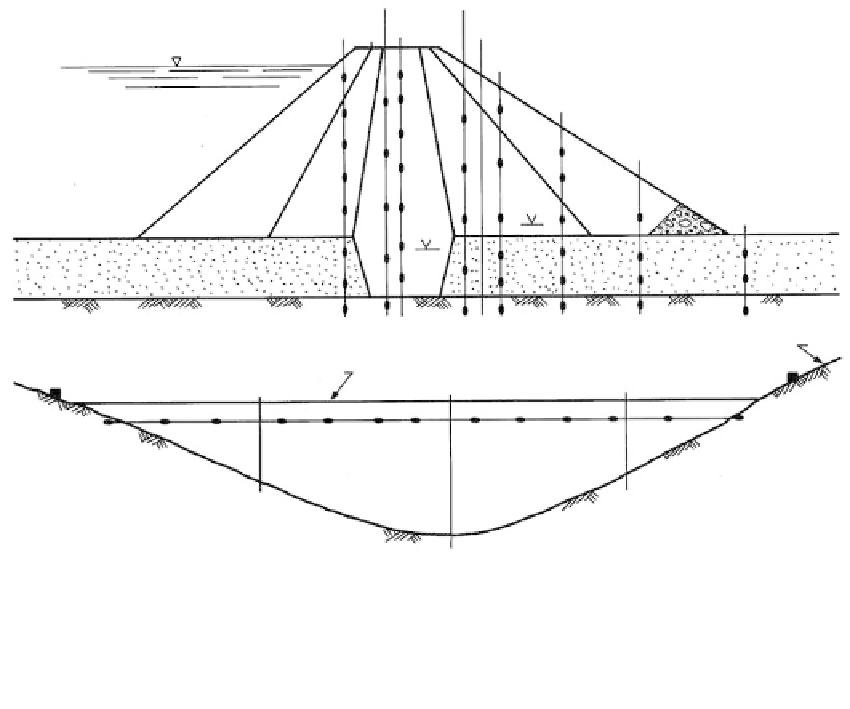Environmental Engineering Reference
In-Depth Information
(k)
(k)
(r)
(a)
(r)
(r)
(L)
(r)
(r)
(s)
(r)
(s)
(A)
(j)
Bench mark
(a)
Bench mark
(q)
(q)
(q)
(p)
(B)
FIGURE 4.38
Instrumentation for an earth dam: (A) cross section. Legend: (a) precise leveling; (k) settlement extensometers
or cross-arm devices; (L) inclinometer; (r) piezometer; (s) pressure cell. (B) Longitudinal section. Legend: (j)
accelerometer; (q) acoustical emission devices; (p) horizontal strain meter.
Slope Stability
Inclinometers (L) monitor deflections in the slopes and pressure cells (s) monitor
stresses.
Seismic Areas
Accelerographs (j) are installed on the dam and abutments to monitor earthquake loadings
(see
Section 11.2.3).
At times seismographs have been used. Automatic-recording piezome-
ters provide useful data because of the pore-pressure buildup occurring during seismic
excitation.
4.5.5
Tunnels, Caverns, and Mines
Case 1: Closed Excavations in Rock
Objectives
Closed excavations in rock masses may or may not require support depending on rock
quality, seepage forces, and the size of the opening. Support systems may be classified as
temporary to permit construction to proceed safely and permanent to provide the final
structure. In large openings there is the need to evaluate progressive deformation and the
possibility of full-scale failure. In small openings, the most frequent problems involve par-
tial or confined failures such as falling blocks and running ground. It is not enough only


